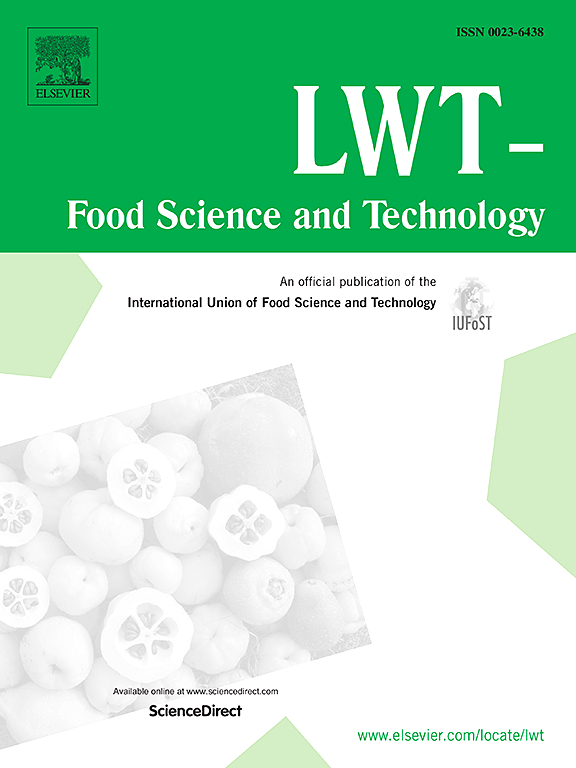Enhancing understanding of microstructure-texture relationship in doughnuts: A comparative study of deep-fat and hot-air frying
IF 6
1区 农林科学
Q1 FOOD SCIENCE & TECHNOLOGY
引用次数: 0
Abstract
This research evaluated the effects of frying temperature (150, 165, and 180 °C) and method (deep-fat and hot air) on doughnut crumb and texture changes. The findings indicated that the dough phase progressively transformed into crumb from the exterior to the interior, accompanied by significant alterations in pore size, shape, and color, as well as the composition of the dough phase. The conversion process duration was influenced by frying temperature and method, lasting approximately 1–1.5 min. The conversion rate was higher in the deep-fat method than in the hot-air one. Overall, textural changes occurred at a lower rate in the hot-air method, as the most changes took place during the first and second 30 s of the process in the deep-fat (180 °C) and hot-air methods, respectively. The doughnut microstructure was assessed using micro-computed tomography (Micro-CT) to study the process of changes in the product's wall thickness and pore size. Considering the front view of the doughnut dough Micro-CT images before frying, it can be asserted that a greater number of small pores were present in the vicinity of the product's surface. The current study's findings could provide a fundamental understanding of microstructure and texture development during doughnut frying, showing that the air frying could be an alternative method to make healthier foodstuff with less oil content while preserving more or less same texture properties.
求助全文
约1分钟内获得全文
求助全文
来源期刊

LWT - Food Science and Technology
工程技术-食品科技
CiteScore
11.80
自引率
6.70%
发文量
1724
审稿时长
65 days
期刊介绍:
LWT - Food Science and Technology is an international journal that publishes innovative papers in the fields of food chemistry, biochemistry, microbiology, technology and nutrition. The work described should be innovative either in the approach or in the methods used. The significance of the results either for the science community or for the food industry must also be specified. Contributions written in English are welcomed in the form of review articles, short reviews, research papers, and research notes. Papers featuring animal trials and cell cultures are outside the scope of the journal and will not be considered for publication.
 求助内容:
求助内容: 应助结果提醒方式:
应助结果提醒方式:


